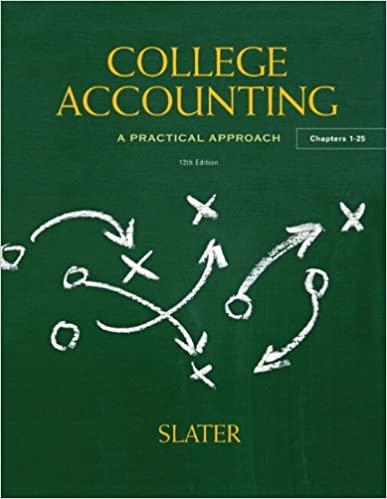Subway uses approximately 60 acres of lettuce a daythe equivalent of more than 17 football fields of
Question:
• Subway uses approximately 60 acres of lettuce a day—the equivalent of more than 17 football fields of lettuce.
• If you take all the cheese that is produced for Subway restaurants in a year and place each slice end to end, they will reach halfway to the moon.
• The manufacturing of Subway cookie dough requires 14.4 million eggs a year and the service of 46,602 busy hens.
With his sales climbing higher and higher, Stan Hernandez does his part to layer football fields with lettuce, send cheese ropes to the moon, and ensure the full employment of 46,602 hens. Yet, just how do Stan and his fellow Subway franchisees manage the flow of so many perishable goods in and out of their restaurants every day? By physically counting the goods.
“Not again,” Wanda moaned, when Rashid asked her to begin taking inventory of the stockroom. “We did that last week.”
“You bet,” countered Rashid, “and we do it every week, as you remember.”
“But my sister works at Walmart and they only take inventory once a year.”
Stan couldn’t help overhearing their conversation as he sat crunching numbers at his back office computer and came out from behind his desk.
“Wanda, as I explained to you during training,” Stan said patiently, “Subway requires all of its restaurants to do a physical count of their inventory once a week.
We’re in a very different business than Walmart. We have to make sure that we have enough cheese, lettuce, bread dough, chicken, tuna, tomatoes . . . you name it, but not too much or it will spoil. And I sure don’t want to run out of our special sauce for these new sweet onion chicken teriyaki sandwiches.”
“It seems like every other sandwich I make is a sweet onion chicken teriyaki,”
said Wanda. “It’s my favorite, too, so I sure don’t want us to run out of it.” She got out her clipboard of inventory report forms and immediately began taking stock.
The need to keep a steady supply of goods, such as its teriyaki sandwich sauce, on hand is just one of the reasons that Subway requires its franchisees to take a physical inventory every week. Physically counting the goods also serves as a control mechanism to prevent or spot employee theft and to prevent restaurant owners from underreporting sales and, hence, paying fewer royalties to Subway.
In terms of physical flow, perishable inventory must be FIFO; the first inventory in is the first used, so that nothing is allowed to get stale or spoiled. If a Subway restaurant owner uses the FIFO method for accounting, the cost follows the physical flow. Although every Subway shop owner uses the FIFO method for physical flow, not every owner chooses this method of accounting. Some prefer LIFO for financial accounting because with this method the cost of goods sold is matched to current selling prices. In a time of infl ation, when prices rise quickly, LIFO saves taxes because it lowers net income.
Subway currently uses a periodic inventory system. Perhaps, with widespread use of the POS cash registers, Subway will create a perpetual inventory system one day. However, Wanda, Rashid, Ellen, and their fellow sandwich artists and Subway managers will still do a weekly physical count of inventory because spoilage, shrinkage, and theft are always possible.
Discussion Questions
1. Learning Unit discusses the retail inventory method. Why does Subway insist on a physical count?
2. The case discussed the different benefits LIFO and FIFO offer Stan. Why might Stan choose a weighted-average method of accounting for inventory costs?
3. The price of tomatoes, lettuce, peppers, and onions is subject to change, depending on growing conditions in Florida, California, Mexico, and other parts of the United States and the world. What effect might this changeability have on the method of financial accounting a Subway restaurant owner chooses?
Step by Step Answer:

College Accounting A Practical Approach Chapters 1-25
ISBN: 9780132772068
12th Edition
Authors: Jeffrey Slater





